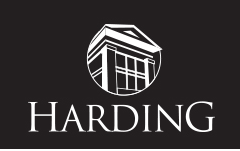
Engineering and Physics Faculty Research and Publications
Coupling Methodological Commitments to Make Sense of Socio-psychological Experience
Document Type
Article
Publication Title
Studies in Engineering Education
Publication Date
12-23-2020
Volume
1
Issue
2
First Page
1
Last Page
13
Abstract
Background: The engineering education research community has embraced a diverse range of qualitative, quantitative, and mixed methods research approaches. In line with the pragmatic roots of both engineering practice and education, we concur with past scholars that no particular method is better than any other. Rather, the method should be determined by the nature of the research object or the social reality of interest.
Purpose/Hypothesis: The purpose of this article is to discuss investigations of complex phenomena that have both individual and socially constructed features by using a mixed qualitative methods approach. Our discussion focuses on how to honor, maintain, and leverage the methodological commitments of multiple approaches to achieve a coherent understanding of the social reality under investigation.
Design/Method: We introduce a method to map a social system of interest and define the scope and nature of a specific and researchable social reality within that social system. We specifically draw on an example of our study of professional shame in engineering contexts, describing how articulating this social reality enabled us to select two qualitative approaches, interpretative phenomenological analysis (IPA) and ethnographic focus groups, to thoroughly examine the phenomenon.
Results: Drawing on data from a larger study, we demonstrate how the two methodologies allowed us to see different features of professional shame. IPA provided a lens into students’ intrapsychic experiences of shame, while the ethnographic lens provided a window into the social construction and maintenance of the norms, expectations, and master narratives that can provoke shame experiences in individual students.
Conclusions: We found that combining multiple qualitative methods, based on an explicit and shared definition of the social reality under investigation, afforded a coherent, empirical understanding of a complex social reality that one method alone could not have provided. Although mixing qualitative methods does demand a cogent way of managing multiple methodological mindsets, the whole outcome of both approaches was greater than the sum of the individual parts. We encourage other engineering education researchers to similarly consider the use of mixed qualitative methods when investigating complex socio-psychological phenomena.
Creative Commons Usage License

This work is licensed under a Creative Commons Attribution 4.0 License.
Copyright held by
Author
Recommended Citation
Huff, J. L., Walther, J., Sochacka, N. W., Sharbine, M. B., & Kamanda, H. (2020). Coupling Methodological Commitments to Make Sense of Socio-psychological Experience. Studies in Engineering Education, 1 (2), 1-13. http://dx.doi.org/10.21061/see.29

